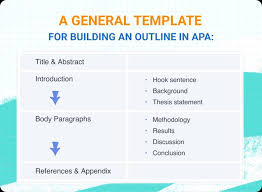Writing a Research Paper: A Step-by-Step Guide
Writing a research paper can seem daunting, especially for students tackling it for the first time. However, with the right approach and a clear plan, the process becomes manageable and even rewarding. This guide will walk you through the essential steps of researching, organizing, and writing a research paper that is well-structured and insightful.
1. Choosing a Topic
The first step in writing a research paper is selecting a topic. Your topic should be interesting to you and relevant to the assignment or field of study.
-Tip:Choose a topic that is neither too broad nor too narrow. A broad topic can be overwhelming, while a narrow one might lack sufficient sources.
- Example: Instead of "Climate Change," consider focusing on "The Impact of Climate Change on Coral Reefs."

2. Conducting Research
Research is the foundation of your paper. It involves gathering information from credible sources to support your thesis or main argument.
- Primary Sources: Original materials such as interviews, surveys, experiments, and historical documents.
- Secondary Sources: Interpretations or analyses of primary sources, such as journal articles, books, and reviews.
- Tip: Use academic databases like JSTOR, Google Scholar, or your school’s library to find reliable sources.
- Organize Your Research: Keep track of your sources and notes. Use tools like digital note-taking apps, or index cards to organize information by themes or sections.
3. Developing a Thesis Statement
Your thesis statement is the central argument or claim of your research paper. It should be clear, concise, and specific.
- Example: "Climate change has significantly affected coral reef ecosystems, leading to widespread coral bleaching and loss of biodiversity."
- Tip: Your thesis should guide the direction of your paper. Ensure every section and paragraph supports this central argument.
4. Creating an Outline
An outline is a roadmap for your research paper. It helps you organize your ideas and ensures that your paper has a logical flow.
- Introduction: Present your topic, provide background information, and state your thesis.
- Body Paragraphs: Each paragraph should focus on a single point that supports your thesis. Start with a topic sentence, followed by evidence and analysis.
Example Structure:
- Paragraph 1: Overview of climate change
- Paragraph 2: Impact on coral reefs
- Paragraph 3: Consequences of coral bleaching
- Conclusion: Summarize your main points, restate the thesis in light of the evidence presented, and suggest implications or future research.
- Tip: Use your outline as a guide during the writing process, but be flexible if your research leads you in a new direction.
5. Writing the First Draft
With your research and outline in hand, start writing the first draft of your paper. Don’t worry about perfection at this stage; focus on getting your ideas down on paper.
- Introduction: Grab the reader’s attention with a hook (e.g., a surprising fact or a quote) and introduce your thesis.
- Body: Develop your argument, using evidence from your research. Ensure each paragraph transitions smoothly to the next.
- Conclusion: Reinforce your thesis and leave the reader with something to think about.
- Tip: Avoid plagiarism by properly citing all sources. Use a consistent citation style (APA, MLA, Chicago, etc.) as required by your assignment.
6. Revising and Editing
Revision is a critical step in the writing process. It involves refining your ideas, improving clarity, and ensuring that your paper flows logically.
- Check for Coherence: Ensure that your paper follows the outline and that each section transitions smoothly.
- Strengthen Your Argument: Make sure your thesis is supported by strong evidence and analysis.
- Edit for Grammar and Style: Look for grammar mistakes, awkward sentences, and ensure consistency in style and tone.
- Tip: Read your paper aloud or ask someone else to review it. A fresh perspective can catch errors or unclear sections you might have missed.
7. Finalizing Your Research Paper
Before submitting your research paper, ensure that it meets all the requirements of the assignment.
- Format Correctly: Follow the required formatting guidelines (font size, margins, title page, etc.).
- Proofread: Carefully proofread your paper for any remaining errors or typos.
- Check Citations: Ensure all sources are properly cited in the text and that the bibliography or works cited page is complete and accurate.
- Tip: Allow time for a final review after taking a break from your paper. This will help you catch any last-minute issues.
Conclusion
Writing a research paper is a process that requires careful planning, research, and revision. By breaking it down into manageable steps—choosing a topic, conducting research, developing a thesis, creating an outline, writing, revising, and finalizing—you can produce a well-organized and persuasive paper. Remember, practice and persistence are key, so keep honing your research and writing skills with each new assignment. Happy writing!






Comments
Post a Comment